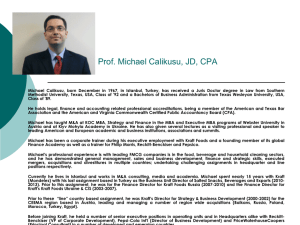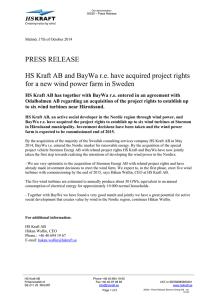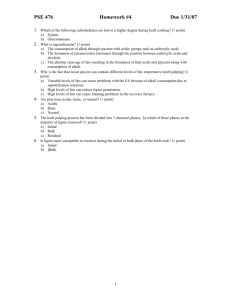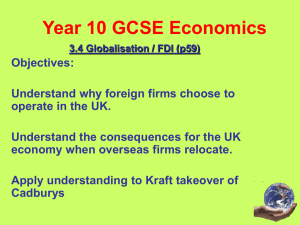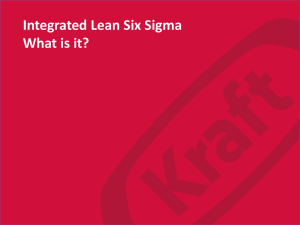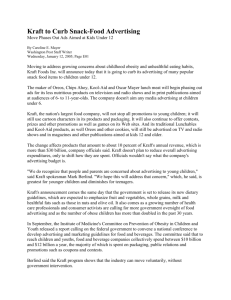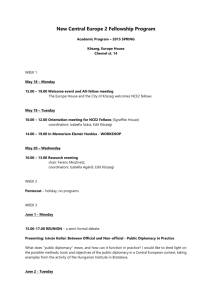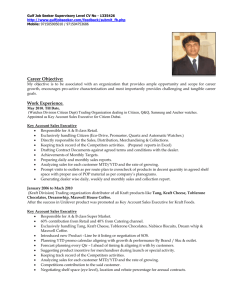Saturating Kraft Product and Industry Overview - Corporate-ir
advertisement
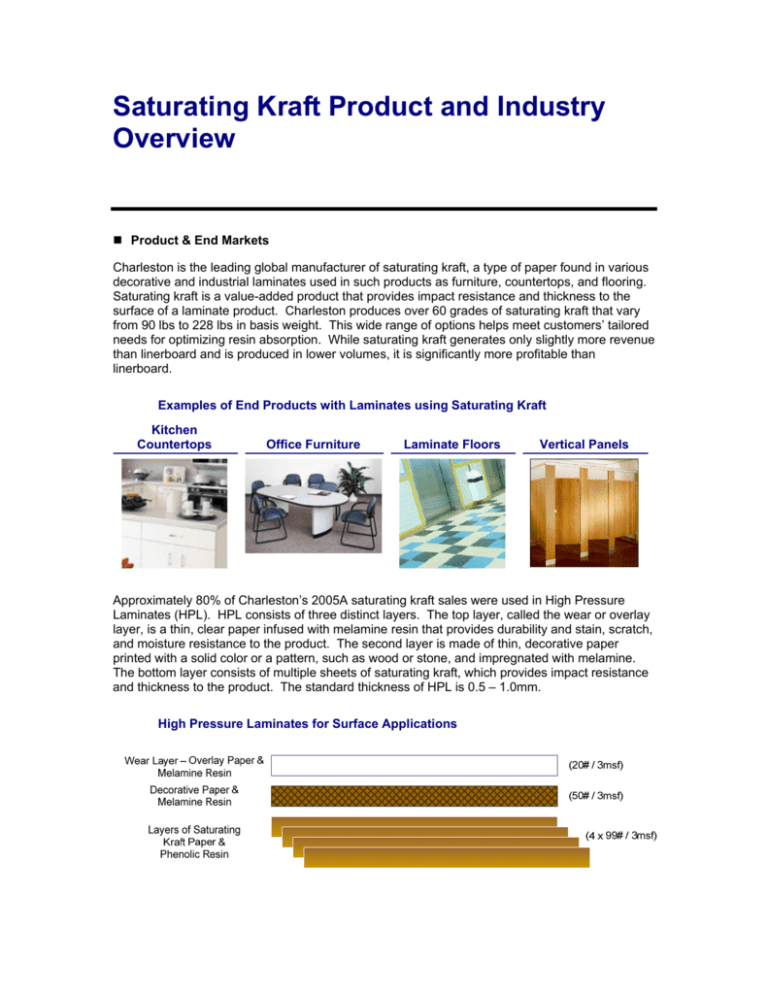
Saturating Kraft Product and Industry Overview Product & End Markets Charleston is the leading global manufacturer of saturating kraft, a type of paper found in various decorative and industrial laminates used in such products as furniture, countertops, and flooring. Saturating kraft is a value-added product that provides impact resistance and thickness to the surface of a laminate product. Charleston produces over 60 grades of saturating kraft that vary from 90 lbs to 228 lbs in basis weight. This wide range of options helps meet customers’ tailored needs for optimizing resin absorption. While saturating kraft generates only slightly more revenue than linerboard and is produced in lower volumes, it is significantly more profitable than linerboard. Examples of End Products with Laminates using Saturating Kraft Kitchen Countertops Office Furniture Laminate Floors Vertical Panels Approximately 80% of Charleston’s 2005A saturating kraft sales were used in High Pressure Laminates (HPL). HPL consists of three distinct layers. The top layer, called the wear or overlay layer, is a thin, clear paper infused with melamine resin that provides durability and stain, scratch, and moisture resistance to the product. The second layer is made of thin, decorative paper printed with a solid color or a pattern, such as wood or stone, and impregnated with melamine. The bottom layer consists of multiple sheets of saturating kraft, which provides impact resistance and thickness to the product. The standard thickness of HPL is 0.5 – 1.0mm. High Pressure Laminates for Surface Applications Compact Laminates, which are a type of HPL, consist of numerous sheets of saturating kraft laminated into panels from 2mm to 13mm in thickness that are covered with decorative paper and a wear layer on both sides. Significantly thicker than the HPL used in surface applications, the resulting product can be used as structural material for bathroom, office and locker partitions, as well as countertops and work surfaces that require high strength and resistance to impact. Charleston delivers saturating kraft to the customer in rolls. The rolls are then saturated with phenolic resin, sheeted, placed into a press with the other two layers, and laminated under high temperature and pressure; the resulting laminate sheet is bonded with an adhesive to a substrate such as particleboard. The remaining 20% of saturating kraft sales are used in industrial laminate applications. Industrial laminates consist of rods, tubes and other forms that utilize paper as a basis and thermosetting resins as binder materials. A major portion of this business consists of overlays, which are resin-treated, cured papers used for outer-layer building sidings and concrete form surfaces. An emerging market is resin-treated paper cured and laminated to OSB for inner-layer housing sidings and roofing. Other industrial laminate applications include high pressure laminates such as gears, electrical parts, and press pad stock. Charleston’s 2005A Saturating Kraft Volume by End Product By End Product Industrial 20% Decorative 80% Source: Management estimates Market Overview The global saturating kraft market consisted of over 762,000 tons in 2005, of which 87% was used in decorative laminate applications and 13% in industrial laminate applications. Global production was evenly distributed between North America, Europe, and Asia, with Latin America representing a smaller component. Primary growth during the past several years occurred in Asia, while the U.S. and Western Europe experienced limited growth. However, even though the overall market averaged 0.3% of annual growth over the last three years, Charleston was able to grow volume by 1.4% over the same period of time. In 2005, Wilsonart and Formica represented more than 60% of North American demand for saturating kraft and 24% outside of North America. The markets for saturating kraft in Europe, Middle East, Asia, Latin America, and Africa are all very fragmented. By 2008, the global saturating kraft market is expected to increase to 829,000 tons per year. From 2005 to 2008, global demand is expected to grow annually at 2.9%, with North America expected to grow at 4.4%, Europe at 2.4%, Asia at 2.2%, and Latin America at 3.0%. Historical and Projected Annual Consumption of Saturating Kraft 900,000 Annual Short Tons 800,000 700,000 600,000 500,000 400,000 300,000 200,000 100,000 0 2001 2002 2003 North America 2004 Europe 2005 2006 Asia 2007 2008 200 Latin America Source: Management estimates Market Position There are three major providers of saturating kraft – Charleston, International Paper’s Savannah mill, and Stora Enso’s Kotka mill. Charleston is the leader in the market, with 37% market share globally and 78% market share in the U.S. The Business is able to differentiate itself from its competitors through its unparalleled technical expertise. Its proprietary tests on paper absorption allow the Business to provide a customized and very consistent product, both side-by-side and roll-to-roll. By ensuring consistency and superior control of product attributes, Charleston allows its laminating customers to minimize costs and optimize quality. As a result, Charleston commands a premium per ton to the market price.
